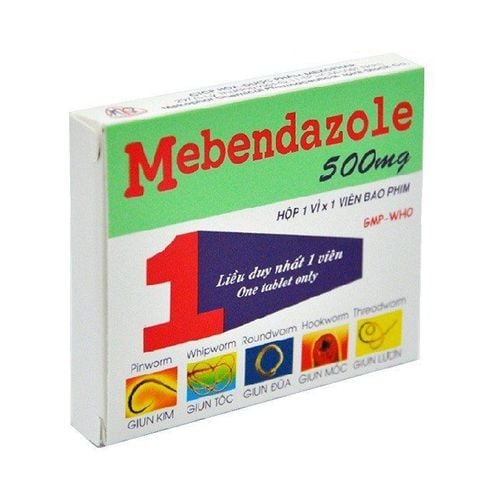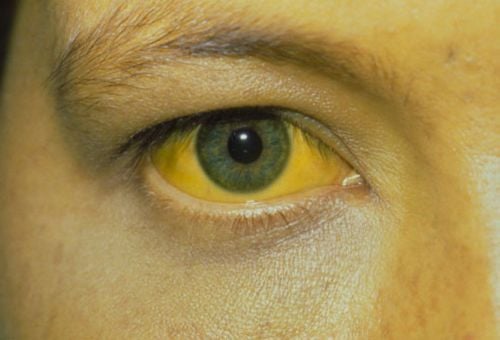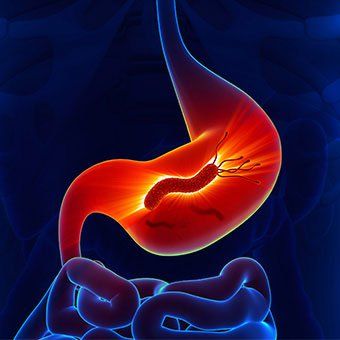This is an automatically translated article.
Canine flu, also known as toxocariasis, is a fairly common disease in Vietnam. This is not a very dangerous disease and can be treated easily if detected early.
1. What is dog tapeworm disease?
Toxocariasis is a form of disease caused by infection with Toxocara parasites, the transmission medium is dogs and cats. Usually, it is only when the tapeworm parasites have nested and grown strongly that the signs of symptoms appear outside. Their eggs are excreted in the faeces into the environment and spread into the soil, dust, vegetables...
Subjects with cysticercosis are both adults and children who can get this disease if there are close, close contacts. Be intimate with dogs, such as hugging, eating and sleeping, playing with pets in the house. Among them, children have a higher risk of disease. Flukes are located in the digestive tract of dogs, when dogs excrete through feces, they often carry eggs and tapeworms. After the eggs are released into the environment, after 1 to 2 weeks, these eggs will become embryos. This is the stage that can cause disease in humans if eggs are swallowed.
When the host or the human body comes into contact with Toxocara parasites, they quickly enter the human body and cause cysticercosis. It is worth mentioning that in the human body, this parasite does not develop into a small fluke, but exists in the form of a larva, moving through the bloodstream and intestinal wall to reach many locations in the human body.
During migration, larvae form small bumps under the skin in the form of tiny red marks and cause damage to the area they pass through. Canine tapeworm disease has the risk of reoccurrence many times, causing a very uncomfortable itching sensation.
2. Is tapeworm disease in humans dangerous?
The danger of tapeworm infections does not depend on the number of larvae entering the body, the location where they cause damage and the extent of the damage. The most dangerous complications of cysticercosis in humans are:
2.1. Complications when larvae migrate to internal organs Hepatitis and pneumonia are relatively dangerous complications when larvae migrate to these areas. If complications are severe, the patient will have signs of systemic symptoms such as hepatitis, hepatomegaly...
In case the larvae migrate to the central nervous system, it can cause serious complications. Serious problems such as peripheral neuritis, meningitis, spinal cord inflammation, stiff neck, inability to regulate movement,... Central nervous system damage caused by tapeworm infection is rare, but it can have serious consequences. risk of serious complications such as sensory disturbances, bowel and bladder disorders, muscle weakness, seizures or coma...
2.2. Complications when larvae migrate into the eye In the case of tapeworm larvae that migrate to the eye, it will usually impair one side of the vision and then gradually lead to complete vision loss. In particular, the larvae migrate into the eye and invade the retina, causing the retina to detach and the patient at risk of blindness. Other ocular complications that may occur when tapeworm larvae migrate include scleritis, eye uveitis, endophthalmitis,...
2.3. Complications when larvae move to other locations In addition to the above dangerous complications, people infected with tapeworms are also prone to digestive disorders, diarrhea, abdominal pain, rash, rash accompanied by itching. prolonged, chronic colitis, headache, cough,...
In general, whether tapeworm infection is dangerous depends on the location where the larvae move to. However, you absolutely must not ignore the signs and symptoms of canine flu, but should promptly examine and actively treat.
3. Can tapeworms be treated?
Canine cysticercosis is curable regardless of the extent of the infection and the organs affected.
In mild stages such as new symptoms of diarrhea, abdominal pain, the doctor will prescribe medicine and ask you to adjust your lifestyle, not to come in contact with cats and dogs, use clean food and eat hygienic drinking. In the advanced stage, when the tapeworm has moved to the brain, causing epilepsy, the treatment will be more difficult and long-term.
4. Drugs to treat tapeworms in humans
Treatment of tapeworm infections requires a combination of methods such as using drugs to treat canine worms, surgery, adjusting diet and daily living habits. It is important that you follow the instructions of your doctor to ensure effective treatment.
Using drugs to treat tapeworms in humans, depending on the severity of the infection, the doctor will prescribe the drug with the appropriate dose. Note, in the process of using the drug, it is necessary to strictly follow the instructions or prescription of the doctor, do not use other people's prescriptions or buy drugs without a prescription from the doctor. The drugs commonly prescribed in the treatment of tapeworms are as follows:
4.1. Albendazole Albendazole is a drug used in the treatment of worm and protozoan infections of the Benzimidazole group. The drug is usually taken orally in the form of 200mg or 400mg tablets. Albendazole is the most common treatment for cysticercosis in humans. Albendazole is effective in the treatment of diseases. The usual therapeutic dose is from 10 to 15 mg/kg for 5, 7, 14 or 21 days depending on the signs and symptoms of the disease for each specific person. Albendazole can be chewed or crushed or swallowed with water. The time to use this medicine is during the meal, especially you can take it with food containing fat to help the body absorb the drug better. 4.2. Mebendazole Similar to Albendazole, Mebendazole is also a commonly prescribed drug used in the treatment of helminths. Mebendazole is not only used to treat tapeworms in humans, but Mebendazole is also used in the treatment of hookworms, pinworms,...
Mebendazole is usually indicated for use in the treatment of human tapeworms with visceral migratory larval disease.
4.3. Ivermectin Drug Ivermectin is a drug to treat tapeworms in humans quite rarely used. The reason is that the drug Ivermectin is not recommended because of its poor effect on the disease. Therefore, Ivermectin is mostly used as an alternative only in cases where the above two drugs cannot be used.
4.4. Other supportive treatment drugs: In addition to specific treatment, the treatment of signs and symptoms for the patient also plays a very important role. Depending on the signs and symptoms of the patient, the doctor may prescribe the use of different drugs such as:
Reduce itching symptoms, reduce allergies to antihistamines H1; Anti-inflammatory drugs with steroids,...; cough suppressants; Digestive disorders,
5. Note when using drugs to treat canine flu in humans
Note, when using drugs to treat cysticercosis with pregnant women in the first 3 months of pregnancy and people who are hypersensitive to the active ingredient Praziquantel should not use this medicine. In addition, women who are breastfeeding should not breastfeed within 3 days after using this medicine.
For dogs infected with flukes, there are often no obvious signs. Usually, it is not until the tapeworm disease is in a severe stage that your pet shows signs of exhaustion and gradually becomes sick. When detecting infected pets, you should take them to the veterinarian for quick and timely treatment, limiting the risk of disease spread, seriously affecting human health.
Using drugs to treat canine worms requires a combination of many methods such as drugs, surgery, adjustment of daily nutrition and living habits. It is important that you follow the instructions of your doctor to ensure effective treatment.
Canine flu is a disease that is not too difficult to treat. If you are sick, you need to see a doctor immediately to be able to have specific and appropriate treatment. Absolutely do not arbitrarily buy drugs to treat tapeworms in humans without a prescription from a doctor.
Please dial HOTLINE for more information or register for an appointment HERE. Download MyVinmec app to make appointments faster and to manage your bookings easily.













